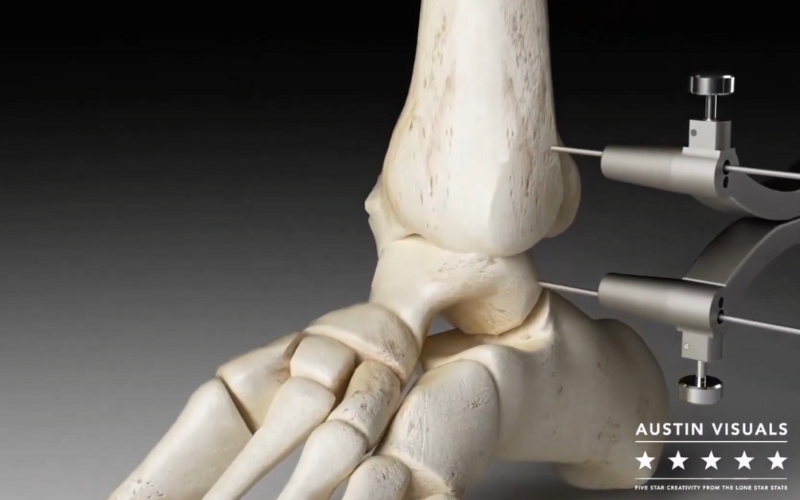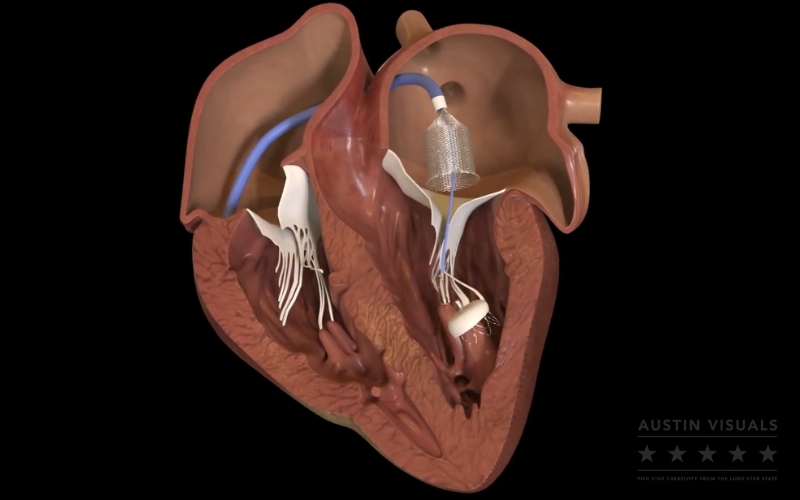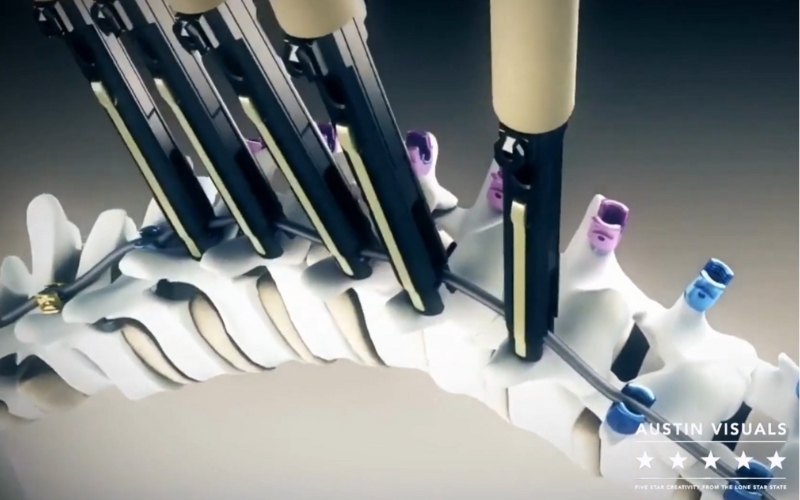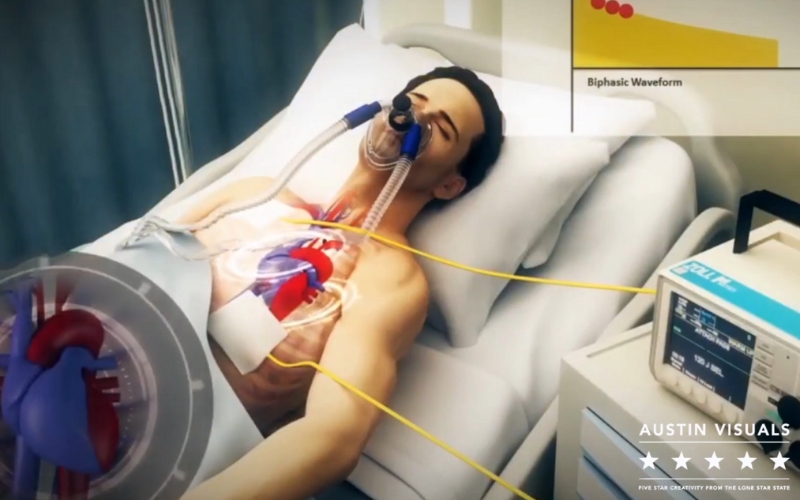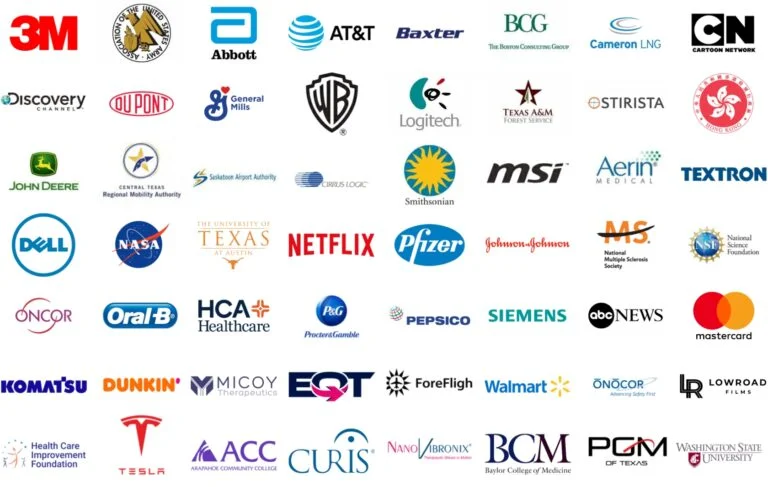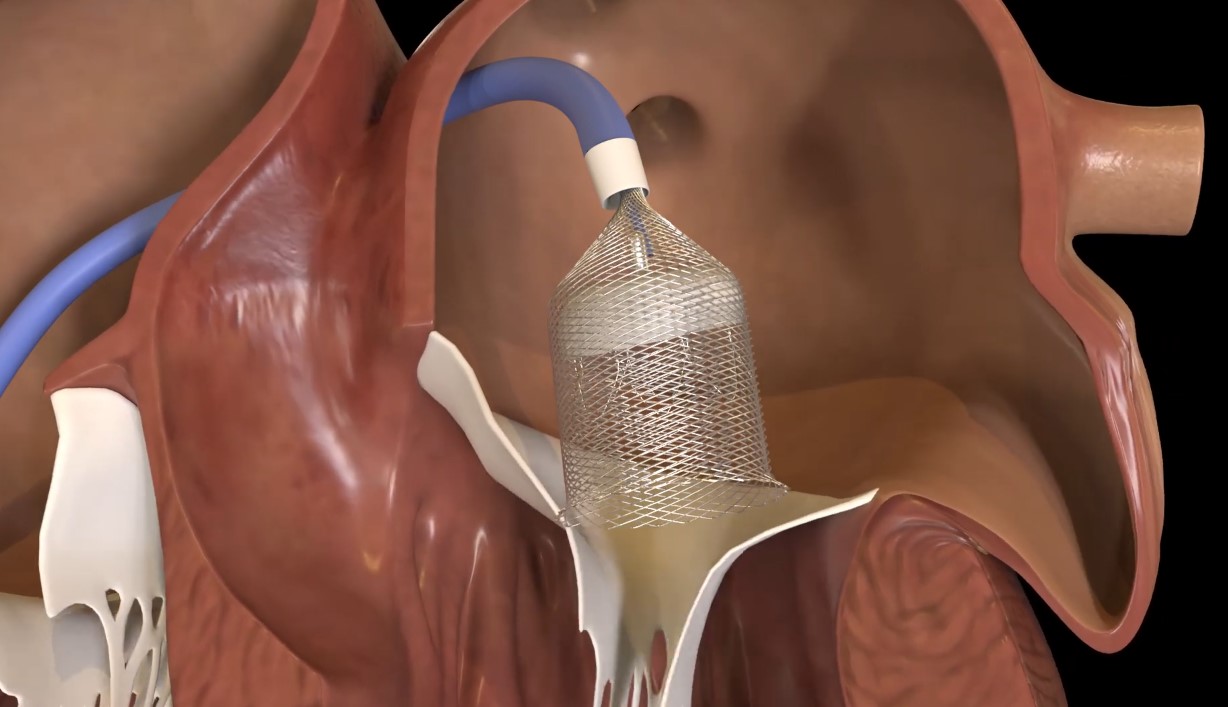
Introduction
In modern healthcare, accuracy and clarity are critical. Whether you’re designing a new surgical implant, preparing for a complex procedure, or explaining a novel device to stakeholders, how you visualize medical data makes a difference. Traditional 2D imaging—while foundational—often lacks the depth needed to fully understand spatial relationships and intricate structures.
Medical 3D visualization changes that. It transforms medical imaging and CAD models into interactive, detailed visuals that aid diagnosis, streamline innovation, and improve communication across clinical, engineering, and regulatory teams. This post explores how 3D visualization is applied across healthcare sectors, why it’s a powerful tool, and how companies like Austin Visuals 3D Medical Animation Company help bring this capability to life.
What Is Medical 3D Visualization?
Medical 3D visualization is the creation of accurate, interactive three-dimensional models from imaging data like CT, MRI, and ultrasound scans or CAD files. Unlike static images or illustrations, these interactive models allow users to rotate, zoom, and explore medical structures or devices from every angle.
Using advanced software, hundreds of 2D imaging slices or digital design files are compiled into detailed 3D models, preserving anatomical accuracy and enabling deeper insights into structures and functions. These visuals significantly enhance surgical planning, medical training, and product development, making complex medical information easier to understand and act upon.
Industry Applications of 3D Medical Visualization
Surgical Planning & Simulation
In surgical procedures, precision is paramount. Medical 3D visualization enables surgeons to thoroughly plan operations by exploring patient-specific anatomical models.
For example, detailed 3D visualizations of tumors, organs, and blood vessels allow surgeons to rehearse complex surgeries virtually, significantly reducing surgical risks and improving patient outcomes.
Medical Device Development & Regulatory Approvals
3D visualization streamlines the medical device development process. Engineers use these visuals to rapidly prototype, test internal mechanics, and refine designs.
Additionally, clear 3D animations enhance FDA submissions, simplifying complex device functions for regulatory review, leading to quicker approvals and market entry.
Marketing & Sales
Effective healthcare marketing demands clear, compelling visuals. Medical 3D visualization vividly demonstrates product functionality, helping sales teams communicate complex features effectively to potential buyers, stakeholders, and investors.
This results in stronger engagement and higher conversion rates.
Real-World Use Cases
Example 1: Orthopedic Device Demo for Investor Presentation
A medical device startup developing a spinal fixation system needed to explain its approach to motion preservation during spinal fusion.
The engineering team had CAD models and clinical data, but struggled to convey the mechanical differentiation clearly to early investors.
Austin Visuals created a detailed 3D animation showing how the device engaged with vertebrae, distributed stress, and adjusted to patient motion. The animation was used in the Series A pitch deck and played at a major orthopedic innovation summit. The startup raised over $7 million in funding and attributed part of their success to the clarity and professionalism of the visuals.
Example 2: Heart Valve Model Used in 3D Surgical Prep
At a major teaching hospital, a surgical team preparing for a complex transcatheter aortic valve replacement (TAVR) needed a better way to visualize deployment mechanics for an anatomically atypical patient. Standard imaging didn’t fully capture the angulation of the valve site.
A 3D model reconstructed from CT data was created and animated to simulate the procedure step-by-step. This allowed the team to rehearse positioning, device orientation, and expansion techniques before entering the OR. The surgery was completed with no complications, and the 3D planning protocol has since been adopted for similar high-risk patients.
Example 3: Animation for Medtech Product Launch Campaign
A mid-size medtech firm launched a new laparoscopic device for minimally invasive gynecological procedures. The marketing team needed launch visuals for conferences, digital ads, and their website. Austin Visuals developed a 90-second animation that walked viewers through the device’s unique grasper mechanism, insertion technique, and post-op benefits.
The visuals were reused across sales presentations, email campaigns, and online training. The campaign not only improved early adoption among surgeons but also helped the sales team convert leads at a 30% higher rate during the first quarter post-launch.
Tools and Technologies Behind the Scenes
Creating accurate and impactful medical 3D visualization requires more than artistic talent—it involves a deep understanding of anatomy, engineering files, and regulatory expectations. Below are the core technologies typically used in the process.
Common Software
-
Maya – Used extensively for 3D animation, rigging, and scene development. Ideal for showing internal device mechanics or complex animations.
-
Blender – A flexible open-source tool with strong modeling and rendering capabilities, particularly effective for prototyping and concept iterations.
-
ZBrush – Used for high-detail organic modeling. Especially useful in anatomical reconstructions or vascular simulation.
-
Arnold Renderer – Produces high-quality photorealistic renders. Frequently used in stills, product close-ups, and cinematic visual assets.
-
Unity – A real-time engine used for interactive simulations, virtual walkthroughs, and app-based medical training tools.
Integration with Imaging Data (DICOM, STL)
For anatomy-based projects, DICOM files from CT or MRI scans are imported into 3D slicers or visualization platforms. These volumetric datasets are segmented to isolate organs, vessels, or lesions and converted into mesh files for modeling.
Similarly, CAD files—often in STL, STEP, or IGES formats—are used as the basis for accurate device visualization. These are cleaned and prepared for rendering within animation software, ensuring proper scale and alignment.
Output Formats
The end product is tailored to its audience and platform. Common formats include:
-
Rendered Videos (MP4) – Ideal for presentations, social media, and websites
-
Still Images (PNG, TIFF, JPEG) – Used in print collateral, product sheets, and digital ads
-
Interactive Simulations (WebGL, Unity builds) – Perfect for trade shows, virtual training environments, or embedded app content
Accuracy in model scale, motion physics, and material appearance is crucial—particularly when the content is used for FDA submission or professional education. Each output is verified through a multi-stage review process involving medical advisors, engineers, and animation specialists.
Choosing the Right 3D Visualization Partner
Selecting the right vendor for medical 3D visualization isn’t just a creative decision — it’s a strategic one. Errors in anatomical accuracy, regulatory formatting, or even simple miscommunication can delay timelines and compromise product credibility.
Here are five essential criteria to guide your selection:
1. Proven Industry Experience
Look for partners with a track record in medical device visualization. Have they worked with companies similar to yours? Can they interpret technical documents, clinical studies, or CAD files and convert them into visuals without hand-holding?
2. Clinical Accuracy
Aesthetics matter, but not at the expense of realism. Your vendor should understand spatial anatomy, procedural flow, and the mechanical logic of medical products. Animation must reflect real-world use cases — whether inside a blood vessel or during a surgical deployment.
3. Regulatory Awareness
If the content will be included in FDA submissions, investor materials, or clinical training, the visualizations must follow presentation standards and data protection rules. Ask if the vendor has experience with HIPAA guidelines, FDA presentation requirements, or CE certification visuals.
4. Flexibility and Collaboration
Medical projects often involve multiple reviewers — engineers, physicians, legal, and marketing teams. Choose a vendor that welcomes iterative review, offers structured feedback cycles, and can pivot quickly if the scope evolves.
5. End-to-End Capability
From scripting and voiceover to 3D modeling and delivery, full-service vendors simplify coordination and improve outcome quality. Look for a team that can guide you from concept through deployment with technical fluency and visual consistency.
Why Companies Choose Austin Visuals
Austin Visuals 3D Animation Studio has spent over 18 years building custom visuals for some of the world’s most advanced industries. Their work spans medical devices, government innovation, legal reconstructions, and advanced manufacturing — with clients ranging from Fortune 500 companies to healthcare startups.
Here’s why teams trust Austin Visuals:
-
Technical Expertise: The team includes animators who understand anatomy, engineers who interpret CAD and DICOM, and producers who manage healthcare-grade QA reviews.
-
Custom Solutions: Every project is built from scratch. No templates, no shortcuts. Whether you need a single orthopedic animation or a suite of product launch visuals, the team tailors every asset to your audience.
-
Regulatory Familiarity: Austin Visuals has delivered projects used in FDA submissions, peer-reviewed clinical presentations, and government healthcare initiatives. Their content is designed to meet both storytelling and compliance goals.
-
Confidentiality and Security: Secure file handling and NDA compliance are part of every engagement. Medical device files, patient imaging data, and proprietary technology visuals are treated with the utmost discretion.
-
High-End Output: From photorealistic renderings to cinematic product animations, Austin Visuals delivers visuals that are accurate, memorable, and ready for executive-level review.
Our Clients include:
Contact us at : [email protected]
Call us : 512 – 591 – 8024
Visit us : www.austinvisuals.com
Will AI Replace Doctors?
In a world of accelerating artificial intelligence, one question keeps surfacing: Will AI replace doctors? It’s a valid concern. From AI-assisted diagnostics to robotic surgery, technology is reshaping modern medicine faster than ever before. But while AI is transforming healthcare tools, it’s not replacing the human beings behind them—and here’s why.
The Human Factor in Medicine Can’t Be Automated
Doctors are more than diagnosticians. They’re listeners, counselors, decision-makers, and caregivers. AI might recognize patterns in an MRI or flag anomalies in a blood test—but it can’t look a patient in the eyes and reassure them before surgery. It doesn’t carry the emotional intelligence to break difficult news with compassion or build trust during a long-term treatment plan.
Medicine is deeply human. Empathy, ethical reasoning, and communication are irreplaceable parts of care that machines simply can’t replicate. Patients want to be seen, heard, and understood—something only trained professionals can deliver.
AI Is a Tool, Not a Substitute
AI in healthcare isn’t the enemy—it’s an ally. Radiologists use it to detect issues earlier. Surgeons use it to plan complex procedures with pinpoint precision. Hospital systems use predictive AI to manage patient flow and reduce bottlenecks.
But these technologies operate under guidance. AI augments doctors—it doesn’t replace their experience, education, or clinical judgment. Ultimately, the final decisions still come from people.
Trust Still Lives in Human Hands
Surveys consistently show that patients trust human providers far more than algorithms. In high-stakes situations, people want a trained physician explaining options, answering questions, and tailoring treatments to their needs. No one wants to hear a life-changing diagnosis from a chatbot.
That’s Where You Come In—and Where We Help
If you’re a doctor, practice, or healthcare provider, now is the time to reinforce your role as a trusted, human face in a tech-driven world. And Austin Visuals is here to help you do just that.
We specialize in creating high-quality medical animations and explainer videos that highlight the human side of what you do. Whether you want to show how a procedure works, tell your story, or explain a complex diagnosis with clarity, our visuals are designed to do more than educate—they connect.
When patients see your face, hear your voice, and watch a personalized animation tailored to your unique practice, they remember it. They trust it. And they choose you over the faceless digital noise.
Video Builds Trust—and Trust Builds Practices
At Austin Visuals, we’ve helped doctors, surgeons, clinics, and medical device companies across the country build their brands through customized 3D and 2D video content. We understand your industry. We speak the language of healthcare. And most importantly—we know how to tell stories that show your humanity while explaining your innovation.
In a time when technology is everywhere, patients are looking for something real.
Let’s make sure they find you.
Conclusion
Medical 3D visualization is not just a design tool — it’s a strategic asset. It shortens innovation cycles, strengthens communication, and accelerates market entry for medical technologies. Whether you’re designing a complex implant, preparing for regulatory submission, or launching a new surgical tool, 3D visuals give you the clarity and confidence to move forward.
Austin Visuals is here to support that journey. With deep domain knowledge, proven results, and a team that understands both the clinical and creative sides of your business, we help your ideas take shape — in the most visual and impactful way possible.
Reach out today at [email protected] or visit www.austinvisuals.com to get a custom quote.
FAQs
What is medical 3D visualization used for?
Medical 3D visualization is used to turn imaging or CAD data into detailed visuals for product development, surgical planning, marketing, and regulatory submission.
How does 3D visualization help with FDA approvals?
3D animations and renderings clearly demonstrate device function, safety, and clinical use. They often make regulatory presentations more persuasive and reduce miscommunication.
Can 3D models be generated from MRI or CT scans?
Yes. DICOM imaging data from CT or MRI can be segmented and reconstructed into accurate 3D models for visualization, simulation, or procedure prep.
What industries benefit most from medical 3D animation?
Medical device companies, biotech startups, hospitals, surgical training institutions, and healthcare marketers all use 3D animation to improve clarity and accelerate outcomes.
How long does a typical 3D medical animation take to create?
Depending on complexity, a project may take 2–6 weeks. Timelines depend on the number of scenes, need for anatomical accuracy, and whether regulatory review is involved.

